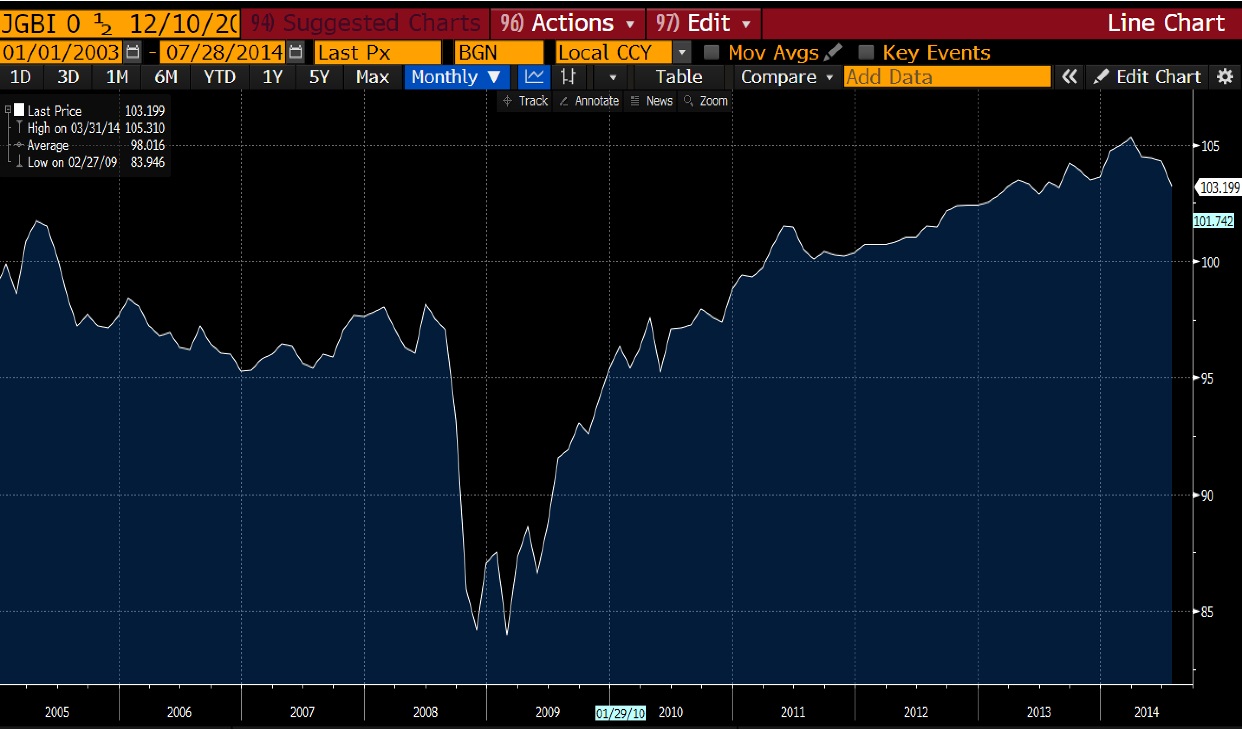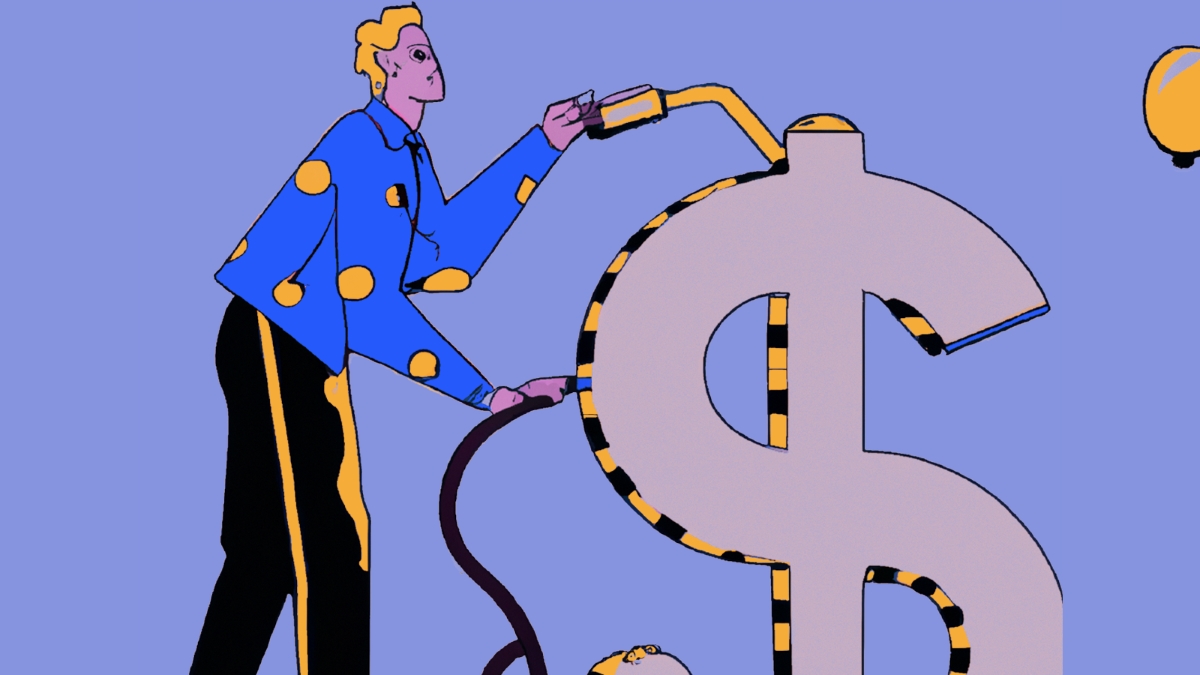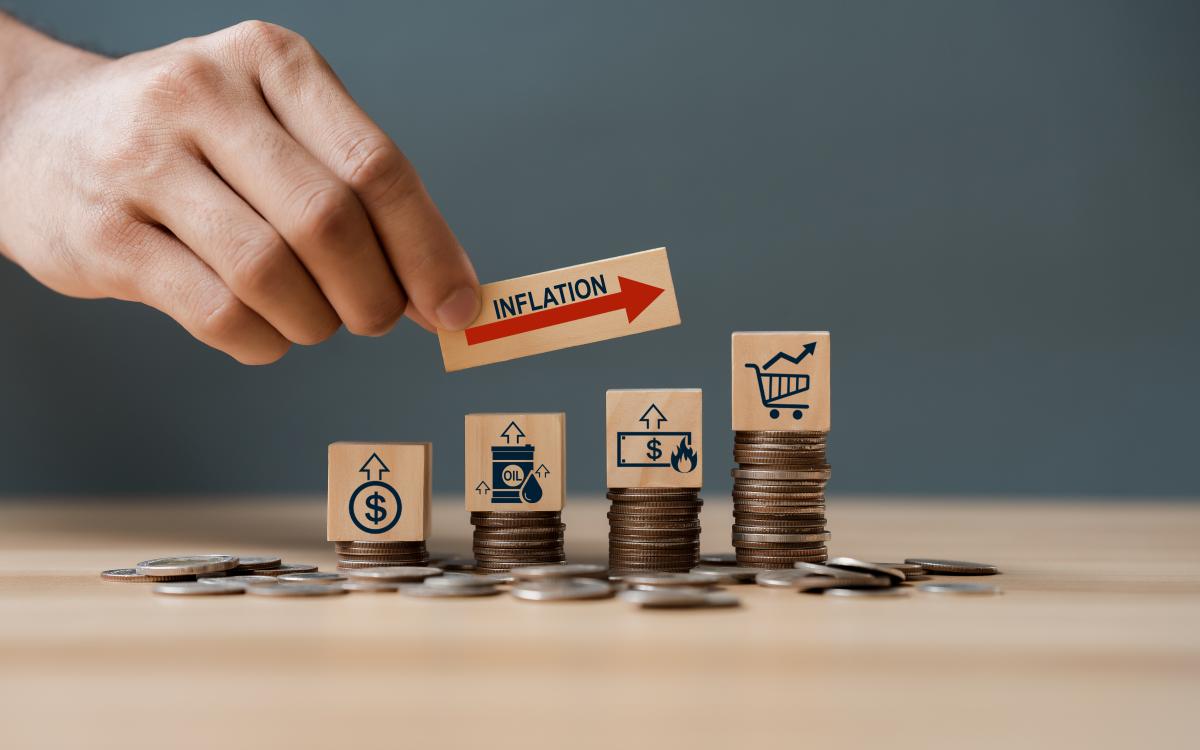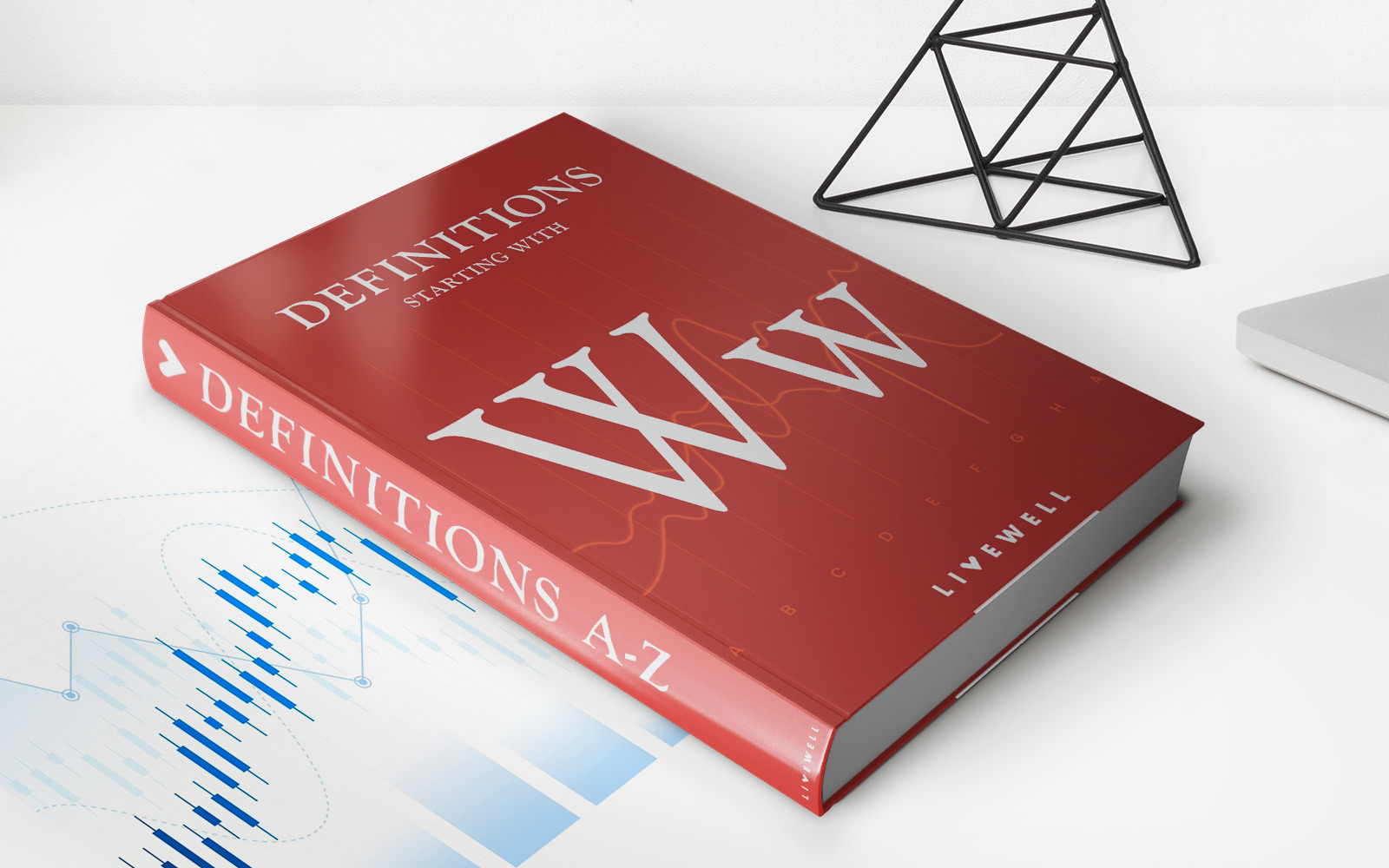

Finance
Why Is 0 Inflation Bad?
Published: October 19, 2023
Find out why 0 inflation can have negative impacts on the economy and understand the implications for personal and business finances.
(Many of the links in this article redirect to a specific reviewed product. Your purchase of these products through affiliate links helps to generate commission for LiveWell, at no extra cost. Learn more)
Table of Contents
Introduction
Inflation is a fundamental concept in economics that refers to the general increase in prices over time. It is commonly measured by the Consumer Price Index (CPI), which tracks the average change in the prices of a basket of goods and services typically consumed by households. While moderate inflation is seen as a sign of a healthy economy, a situation of 0 inflation, or no change in prices, can have detrimental effects.
When there is no inflation, the purchasing power of money remains constant. On the surface, this may seem ideal, as it means that consumers can buy the same amount of goods and services with the same amount of money over time. However, this static environment can actually hinder economic growth and stability in a number of ways.
It is important to note that a healthy level of inflation is typically considered to be around 2-3%. This allows for gradual price adjustments and encourages spending and investment, fueling economic activity. However, when inflation falls to zero, it can have several negative consequences that impact both individuals and the broader economy.
In this article, we will explore why 0 inflation is considered bad and the reasons behind its negative effects. We will also discuss why inflation serves as an indicator of economic growth and how policymakers aim to maintain optimal inflation levels.
The Concept of Inflation
Inflation is a measure of the rate at which the general level of prices for goods and services is rising, and consequently, the purchasing power of a currency is falling. It occurs when there is an imbalance between the supply and demand for goods and services in the market, leading to upward pressure on prices. Inflation is typically expressed as a percentage increase over a specified period, such as a year.
Several factors contribute to inflation, including increased production costs, changes in government policies, fluctuations in exchange rates, and changes in consumer demand. When these factors come into play, businesses often pass on the increased costs to consumers in the form of higher prices for goods and services.
Inflation can have both positive and negative effects on the economy. Moderate inflation is generally considered beneficial as it promotes economic growth and stability. It encourages spending and investment as individuals and businesses anticipate higher future prices. It also allows for wage growth, ensuring that incomes keep pace with rising prices.
On the other hand, high inflation can be detrimental to the economy. When prices rise rapidly, consumers’ purchasing power diminishes, and they are likely to reduce spending and delay major purchases. This decrease in demand can lead to reduced production, layoffs, and ultimately, a slowdown in economic activity.
It is crucial to strike a balance when it comes to inflation. Too little or no inflation, as we will explore in the next section, can have its own set of negative consequences. Conversely, high and volatile inflation can create uncertainty, disrupt long-term planning, and erode the value of savings and investments.
Now that we have a basic understanding of inflation, let’s delve into why 0 inflation is considered bad and its implications on the economy.
Understanding the Importance of Inflation
Inflation plays a vital role in a healthy and functioning economy. It serves as an indicator of economic growth and stability, influencing various aspects of individuals’ financial well-being and the overall performance of the economy.
First and foremost, inflation allows for price adjustments over time. As the cost of production, wages, and raw materials increase, businesses need to raise prices to maintain profitability. This gradual increase in prices ensures that resources are allocated efficiently, incentivizing businesses to innovate, invest, and create new opportunities. It also provides a signal to consumers about the relative value and scarcity of goods and services.
Inflation also plays a crucial role in reducing the burden of debt. When inflation is moderate, it erodes the real value of debt over time. This means that borrowers benefit from repaying loans with money that is worth less than when they originally borrowed it. It can provide a sense of relief to individuals and businesses that have accumulated debt and increase their ability to repay it.
Furthermore, inflation encourages spending and investment. When individuals expect prices to rise in the future, they are more likely to make purchases and investments in the present. This stimulates economic activity and drives growth. Additionally, moderate inflation allows for wage increases, ensuring that workers’ incomes keep pace with rising prices. This leads to greater consumer spending power and sustained economic demand.
Another important aspect of inflation is its impact on investment decisions. When inflation is low but positive, individuals and businesses are encouraged to invest their money in productive assets such as stocks, bonds, and real estate. This enables the economy to mobilize savings and channel them into productive investments, fueling economic growth.
Overall, a certain degree of inflation is necessary for maintaining a healthy and dynamic economy. It ensures price stability, encourages spending and investment, reduces the burden of debt, and provides economic signals. However, when inflation falls to zero, as we will explore in the next section, it can have detrimental effects on the economy and individuals’ financial well-being.
Negative Effects of 0 Inflation
While the idea of price stability and no change in prices may seem appealing, a situation of 0 inflation can have several negative consequences for the economy and individuals.
One of the primary concerns with 0 inflation is the risk of deflation. Deflation occurs when prices continue to decline over time, leading to a decrease in the overall level of economic activity. When consumers expect prices to fall in the future, they delay purchases, causing a decrease in demand. This, in turn, limits production and can lead to business closures and job losses. Deflationary pressures can create a vicious cycle of reduced spending, lower production, and economic contraction.
Furthermore, 0 inflation can hinder wage growth. Inflation provides an incentive for employers to increase wages to keep up with rising prices. When inflation is absent, employers may be less motivated to raise wages, resulting in stagnant or even declining real wages for workers. This can lead to a decrease in the purchasing power of individuals, impacting their quality of life and ability to afford essential goods and services.
Inflation also allows for adjustments in the economy’s relative prices. When certain industries experience increased costs of production, they can pass on these costs to consumers through higher prices. This redistribution of resources ensures that industries with higher demand and productivity are rewarded while those with lower efficiency face pressure to improve. Without inflation, this necessary adjustment mechanism is hindered, potentially leading to inefficient allocation of resources and a less dynamic economy.
Moreover, 0 inflation can negatively impact investments and financial markets. In a low or zero inflation environment, the real return on investments, such as bonds or savings accounts, can be significantly reduced. This discourages individuals from saving and investing, and can lead to a preference for non-productive assets like cash. This lack of productive investment can impede economic growth and limit opportunities for wealth creation.
Lastly, when inflation is absent, central banks have limited tools to stimulate the economy during periods of economic downturn. In normal times, central banks lower interest rates to encourage borrowing and spending, boosting economic activity. However, when interest rates reach zero, known as the zero lower bound, this policy tool becomes ineffective, reducing the ability to combat recessions or promote economic recovery.
Overall, while 0 inflation may seem desirable on the surface, it can have significant negative effects on the economy, including the risk of deflation, stagnant wages, inefficient resource allocation, reduced investment opportunities, and limited monetary policy effectiveness. It is important for policymakers to aim for an optimal level of inflation to maintain a healthy and vibrant economy.
Inflation as an Indicator of Economic Growth
Inflation serves as an important indicator of economic growth and overall economic health. It provides valuable insights into the level of economic activity, consumer behavior, and the effectiveness of monetary policy.
One of the key ways in which inflation reflects economic growth is through its relationship with consumer spending. When inflation is moderate and stable, it encourages consumers to spend their money rather than holding onto it. This increased consumer spending leads to a boost in demand for goods and services, driving economic growth. Conversely, if inflation falls to zero or turns negative, consumers may delay purchases, leading to decreased demand and a potential slowdown in economic activity.
Inflation also serves as a gauge of the effectiveness of monetary policy. Central banks around the world aim to maintain a target inflation rate that fosters sustainable economic growth while keeping inflation in check. By monitoring inflation levels, policymakers can assess whether their monetary measures, such as interest rate adjustments or stimulus programs, are having the desired impact on the economy. If inflation is consistently below target, it may indicate the need for further monetary stimulus to stimulate economic activity. On the other hand, if inflation exceeds the target, policymakers may need to implement measures to cool down the economy and prevent excessive inflation.
Moreover, inflation acts as a barometer of business conditions and profitability. When inflation is low and predictable, businesses can plan and make informed decisions about pricing, investments, and expansion. They can adjust their prices and wages accordingly, ensuring that profitability remains sustainable. However, when inflation becomes volatile or unpredictable, businesses face challenges in forecasting costs and revenues. This uncertainty can hinder investment decisions and lead to less efficient resource allocation in the economy.
Inflation also has implications for real wages, which measure the purchasing power of workers’ incomes. When inflation is in line with wage growth, real wages remain stable or increase. This means that individuals can maintain or improve their standard of living as their income keeps pace with rising prices. Conversely, if inflation exceeds wage growth, real wages decrease, and individuals may struggle to maintain their living standards. Therefore, inflation levels can greatly impact the financial well-being of individuals and their overall contribution to economic growth.
Overall, inflation serves as an important indicator of economic growth and stability. By analyzing inflation trends, policymakers, businesses, and analysts can gain insights into consumer behavior, the effectiveness of monetary policy, business conditions, and the financial well-being of individuals. It plays a vital role in shaping economic decisions and ensuring the long-term sustainability of the economy.
Ensuring Optimal Inflation Levels
Maintaining optimal inflation levels is a delicate balance for policymakers. While inflation is necessary for a healthy and growing economy, excessive inflation can erode purchasing power and disrupt economic stability. Here are some key considerations and strategies for ensuring optimal inflation levels:
1. Central bank independence: Central banks, tasked with managing inflation, should operate independently from political interference. This autonomy allows them to focus on price stability and make monetary policy decisions based on economic data and analysis rather than short-term political considerations.
2. Inflation targeting: Many central banks adopt inflation targeting as a framework for monetary policy. They set a specific target inflation rate, often around 2-3%, and adjust policy tools to maintain inflation within that range. This approach provides guidance and transparency to businesses and consumers, fostering stability and predictability in the economy.
3. Monitoring economic indicators: Policymakers closely monitor various economic indicators, such as GDP growth, employment levels, wage growth, and productivity, to assess the state of the economy and the appropriate level of inflation. This information helps them make informed decisions about monetary policy adjustments to maintain a balance between growth and price stability.
4. Implementing appropriate monetary policy tools: Central banks have a range of monetary policy tools at their disposal, such as adjusting interest rates, open market operations, and reserve requirements. These tools can be used to manage inflation by influencing borrowing costs, money supply, and liquidity in the financial system.
5. Managing inflation expectations: Expectations play a crucial role in shaping inflation dynamics. Central banks need to effectively communicate their inflation targets and actions to manage expectations. If businesses and consumers believe that the central bank is committed to maintaining price stability, it can help anchor inflation expectations and prevent uncontrolled inflation or deflationary pressures.
6. Balancing inflation and other economic objectives: Policymakers need to strike a balance between maintaining price stability and supporting other economic objectives, such as maximizing employment and promoting sustainable economic growth. They must carefully weigh the trade-offs between these objectives and adjust policies accordingly, ensuring that inflation remains within the desired range without sacrificing other important economic indicators.
7. International cooperation: In a globally interconnected world, international cooperation among central banks and policymakers is vital for managing inflation. Collaboration can help address cross-border inflationary pressures, exchange rate fluctuations, and the impact of global economic shocks, ensuring stability and minimizing spillover effects.
By employing these strategies and consistently monitoring economic indicators, policymakers can strive to maintain optimal inflation levels that promote economic growth, price stability, and the financial well-being of individuals and businesses.
Conclusion
Inflation is a fundamental concept in economics, and its impact on the economy and individuals cannot be underestimated. While moderate inflation is viewed favorably as a sign of a healthy economy, 0 inflation can have detrimental effects on economic growth, stability, and the financial well-being of individuals.
Throughout this article, we have explored why 0 inflation is considered bad and the reasons behind its negative effects. We have seen that 0 inflation can lead to the risk of deflation, stagnant wages, inefficient resource allocation, reduced investment opportunities, and limited policy effectiveness.
Furthermore, we have discussed the importance of inflation as an indicator of economic growth. Inflation provides insights into consumer spending, the effectiveness of monetary policy, business conditions, and the financial well-being of individuals. It serves as a valuable tool for policymakers, businesses, and analysts to make informed decisions and promote sustainable economic growth.
To ensure optimal inflation levels, policymakers must embrace central bank independence, implement inflation targeting frameworks, closely monitor economic indicators, and make appropriate use of monetary policy tools. Moreover, managing inflation expectations and promoting international cooperation are crucial factors in maintaining price stability and economic prosperity.
In conclusion, a certain degree of inflation is necessary for a healthy and dynamic economy. Balancing the goals of price stability, economic growth, and the financial well-being of individuals is essential for policymakers. By maintaining optimal inflation levels, we can create an environment that fosters sustainable economic growth, encourages investment, and ensures the stability of prices for the benefit of individuals and the economy as a whole.














